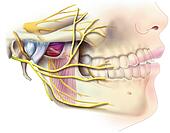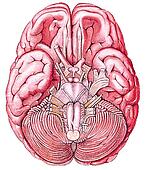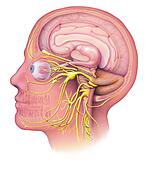Definition
Conjugate gaze is abnormal when either or both eyes fail to move in unison in a horizontal or vertical direction. Diplopia is usually absent.
Technique
The oculomotor examination begins after examining visual acuity and visual fields. This chapter deals with the examination of five aspects of ocular function: fixation, saccadic movements, pursuit movements, compensatory movements and opticokinetic nystagmus. The monograph by Leigh and Zee (1983) and the book by Miller (1985) are excellent sources of further information.Fixation
Have the patient look at a convenient object at 1 m, and then at an object 6 m away. Carefully observe all eye movements during fixation. The ophthalmoscopic examination provides another opportunity to observe these movements. Instruct the patient to fixate on an object with the eye not being examined. Abnormal movements will be seen as motion of the optic nerve head in the eye being examined.
The eyes are never absolutely still in a normal individual. Three types of movements are seen (Miller, 1985): (1) microsaccades, occurring at a frequency of 2 per second with an amplitude of 6 minutes of arc; (2) continuous microdrift at rates of less than 20 minutes of arc/second; and (3) microtremor, which consists of high-frequency oscillations of 5 to 30 seconds of arc. The function of these movements is not clear.



 2:04 AM
2:04 AM
 Unknown
Unknown




 Posted in:
Posted in:
0 comments:
Post a Comment